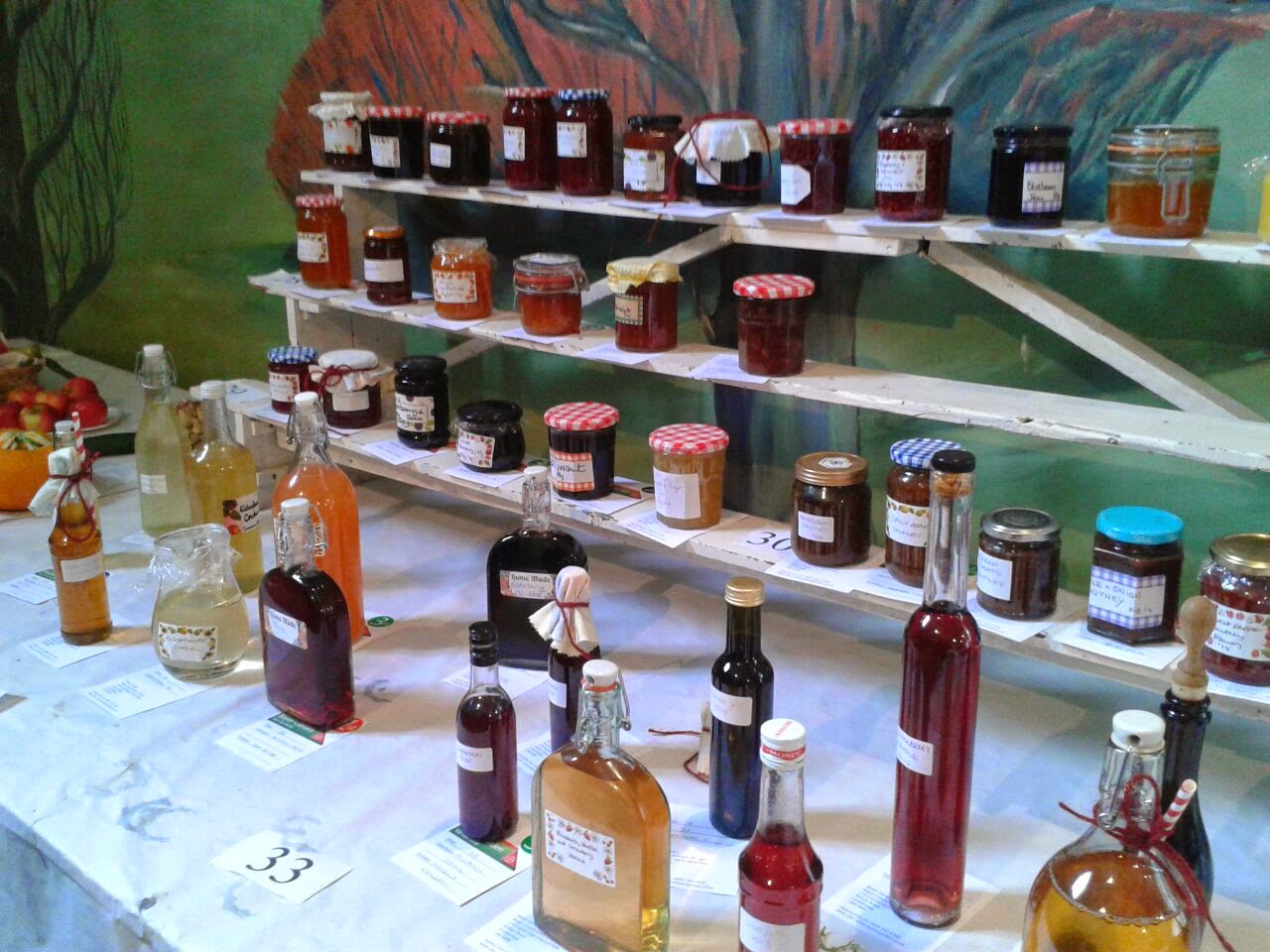There are various classes and this year I decided to 'go big' on the preserves. I entered apricot jam, red onion marmalade (recipe on this blog), rhubarb and vanilla vodka and whisky marmalade.

There were around a dozen competitors and 7 different classes, and I'm thrilled to announce that I won the preserves cup! This unfortunately involved beating my mother which she was none too pleased about, but hopefully thought it was testament to her coaching.
Due to a historic rule that the cup cannot leave the participating villages, I have unfortunately had to leave the glamorous trophy at my parent's house, however I couldn't resist boasting with a few pictures on here....
Apricot Jam
I used French Apricots for this recipe and used the usual half fruit to half sugar (by weight) method as described for other jams on this blog.
Whisky orange marmalade
I made this quite a thick cut marmalade and added a shot of whisky (for a 5 jar yield) just before spooning the jam into jars. Makes a good Christmas present!
Red onion marmalade
See my previous post for this recipe. I have found it to be a firm favourite and very versatile. I love onions but they very rarely shine in their own right. This sweet and sticky condiment does just that. Try with sausages, cold meats, cheese or on pizza with goat's cheese!
 |
| Rhubarb, vanilla and strawberry vodka |
Rhubarb and vanilla vodka
For this liqueur I took a 750ml glass bottle and chopped a medium stalk of rhubarb into half length ways and then into small chunks and put them in the bottle. I then added half a vanilla pod and a could of tablespoons of sugar.
After infusing for a month or so I tasted the result and found it a bit heavy on the vanilla. I therefore sieved the contents to remove the rhubarb and vanilla, and then reinfused the vodka with some more rhubarb and a couple of strawberries for good measure.
The result was rather delicious served straight, ice cold!
The next day I went foraging around the village for some late summer spoils and was well rewarded for the trouble. The resulting bounty of blackberries and apples, sloes, plums and raspberries were used in a crumble, to make gin, as a snack and to decorate fairy cakes (respectively). A very successful weekend!
For those of you who may feel moved to enter a village show. My top tips would be:
- Don't stress about it, enter some preserves you have entered during the year that have gone well
- Pay attention to presentation. Fill jars 1cm from the top, make sure the jars aren't sticky and use nice jars and labels
- Enter lots of classes for the best chance of WINNING (but of course it's taking part that counts ;) )









.jpg)







.jpg)


























